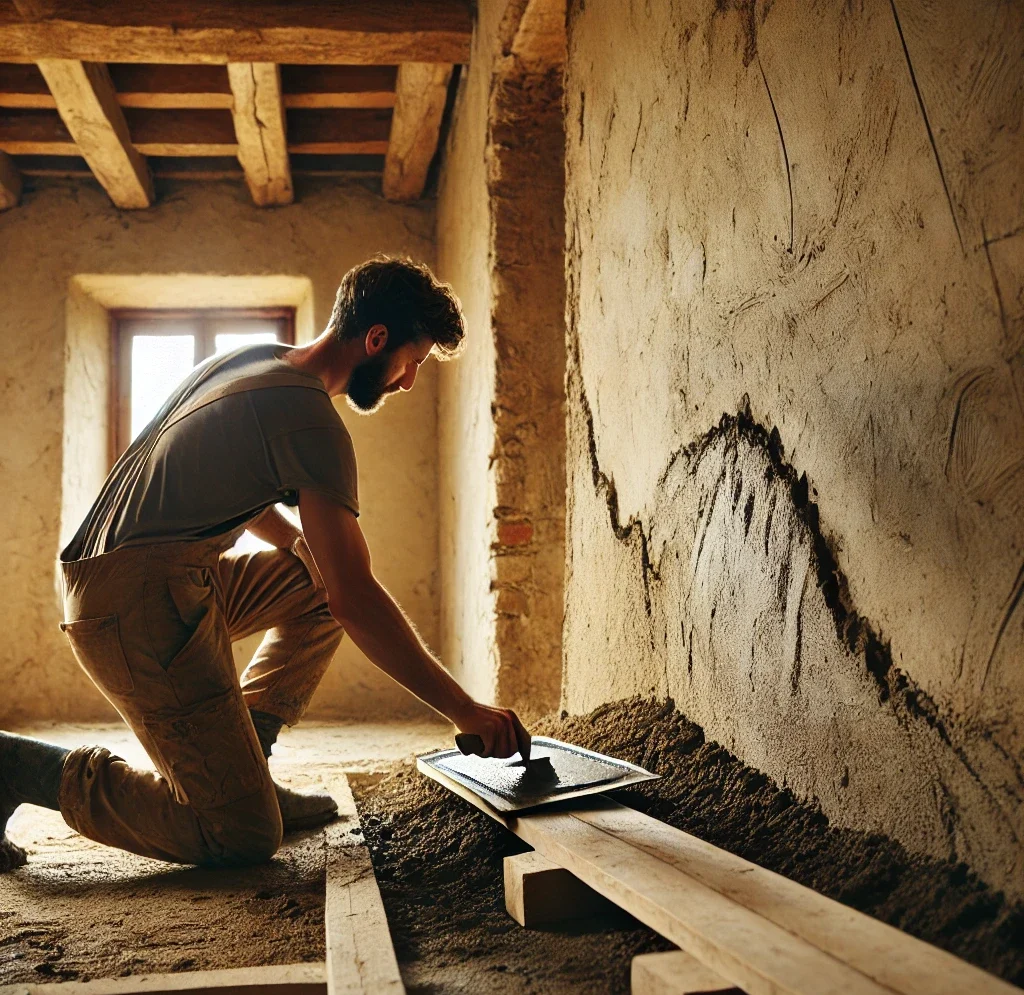Clay walls, while popular for their eco-friendliness and natural properties, do not always have perfect flatness. Irregularities can arise from many reasons, such as material shrinkage, humidity, or even natural temperature fluctuations. 🏡 Despite the visual aesthetics, uneven walls can lead to a number of problems that can negatively affect living conditions.
Why is it important to level clay walls? First of all, it significantly increases the energy efficiency of your home. Uneven surfaces lead to the formation of gaps through which cold air can enter in winter and heat in summer, increasing heating and cooling costs. 💡
Secondly, leveling the walls provides better structural stability. Uneven walls can throw the entire building off balance, provoking cracks and deformations. But these are not the only reasons why leveling is important!
Level walls contribute to better adhesion with finishing materials, such as wallpaper or paint, preventing premature wear.
One cannot overlook aesthetics. 💖 Uneven walls can significantly deteriorate the appearance of a room, making it uncomfortable to live in, and even deterring potential buyers. In a world where first impressions matter, a flat surface can be your secret weapon.
| Problem | Impact |
|---|---|
| Clay shrinkage | Irregularities and cracks |
| Humidity | Plaster falling off, mold |
| Temperature fluctuations | Wall deformation |
Thus, leveling clay walls is not only an aesthetic necessity but also a requirement for ensuring the comfort and stability of your space. Do not delay this process, as timely leveling can significantly reduce future repair costs and ensure the longevity of the building. 🌿
Preparing Walls for Leveling
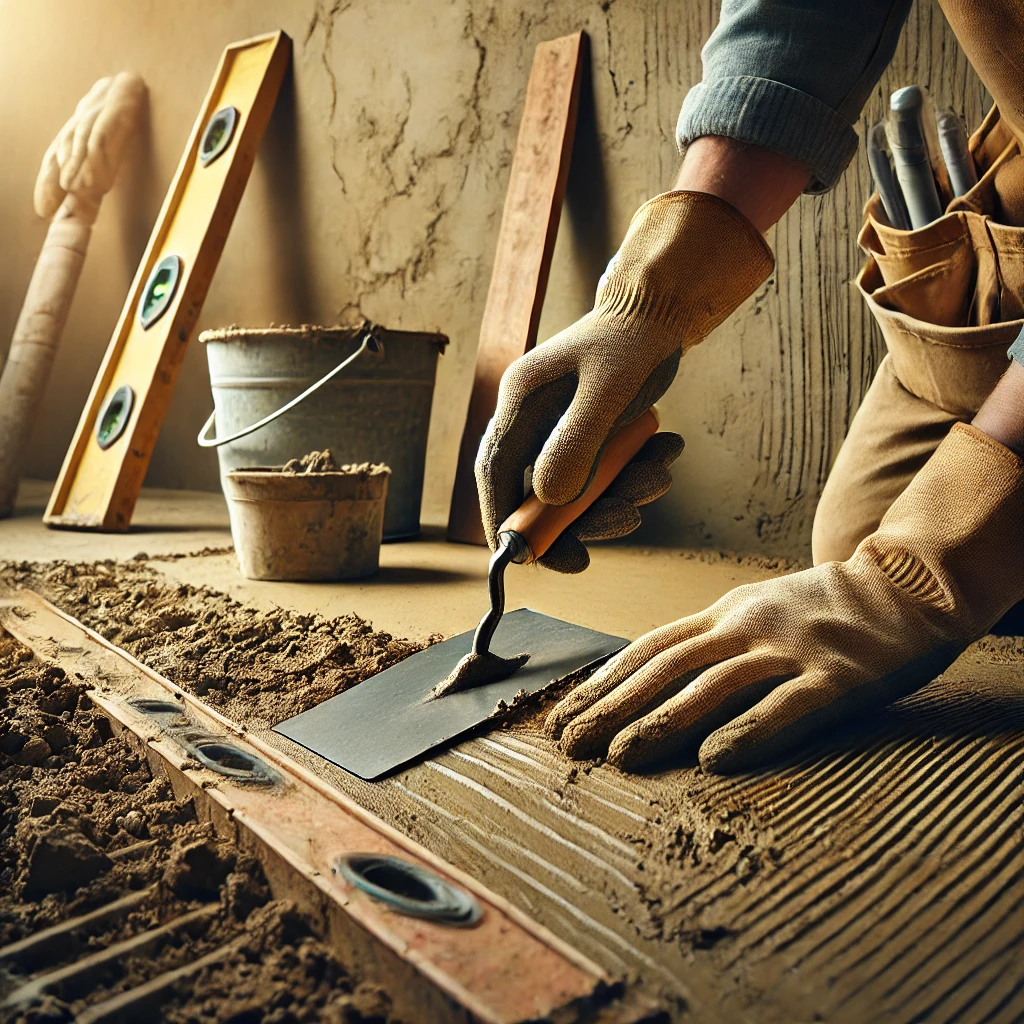
Before starting to level clay walls, it is necessary to carefully prepare the surface to ensure an effective and durable result. Preparation is not just about gathering tools, but it is a completely different stage that determines the success of the entire process. So, let’s look at what to pay attention to when preparing walls for leveling to avoid common mistakes. 🛠️
Before you begin, familiarize yourself with the wall preparation heading, which includes several important stages:
- Inspection and assessment of wall condition: before starting leveling, you need to carefully inspect the walls. Pay attention to the presence of cracks, dents, and other defects. Use a level or laser measurer to determine deviations from vertical and horizontal.
- Surface cleaning: before applying the leveling compound, the walls need to be cleaned of dirt, old paint, plaster, dust, and other contaminants. It is recommended to use brushes and a damp cloth for this.
- Moistening the walls: if your wall is very porous or the cracks are very deep, moisture can help the leveling material adhere better. It is recommended to lightly moisten the surface with water using a sponge or spray bottle, but do not oversaturate the wall.
- Repairing defects: if there are serious cracks or dents, they need to be filled with putty or a special sealant to avoid further deterioration. Do not forget that this can also affect the aesthetics of the finished result!
At this stage, it is important to be attentive. Improper wall preparation can not only spoil the appearance but also lead to faster deterioration of the leveling material. Therefore, it is better to spend more time on preparation to avoid having to revisit this issue in the near future. ⏳
Quality preparation is the key to the durability and aesthetics of your clay walls!
After completing all the preparation stages, you will be ready to proceed to the leveling itself. Remember that even the best materials will not perform well if they are not used on well-prepared surfaces. 🌟
Tools and Materials for Work
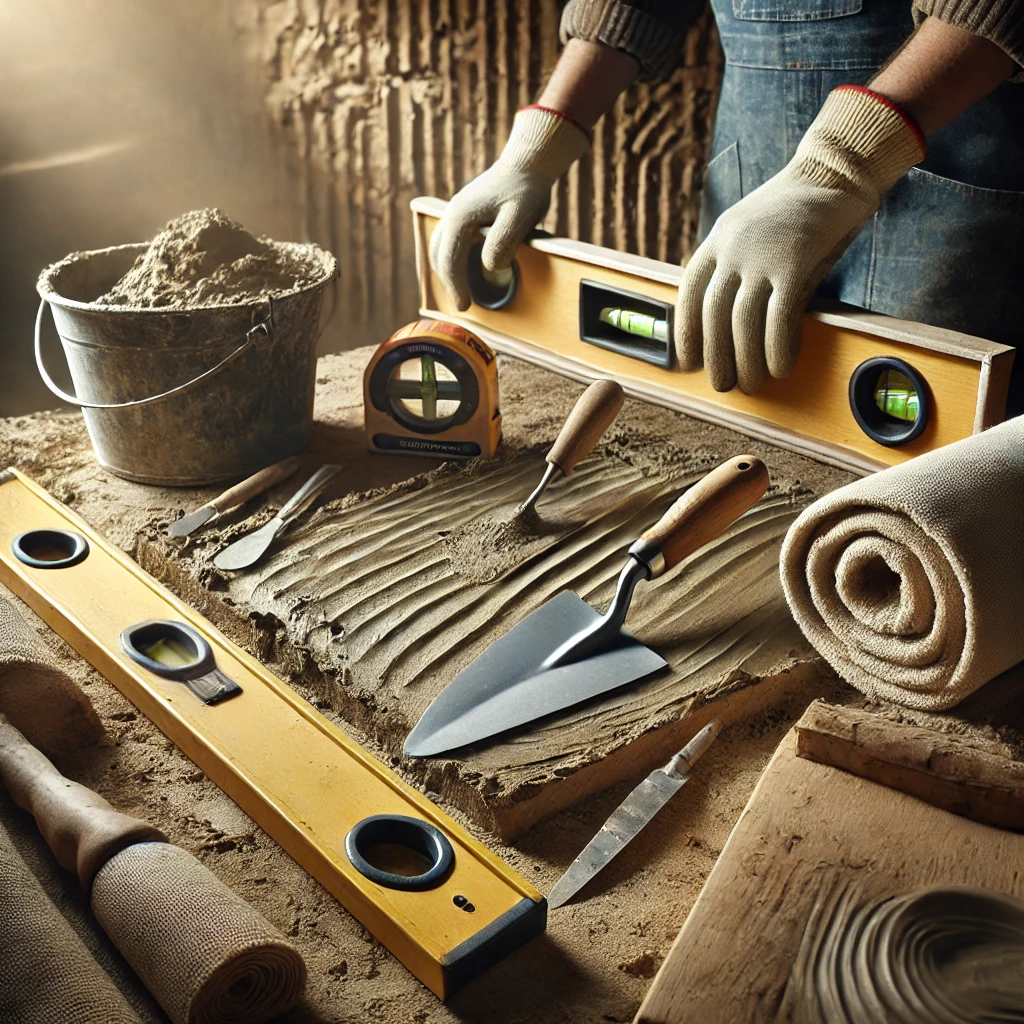
When leveling clay walls, the right tools and materials play a key role in achieving quality results. Depending on the leveling method, you will need different tools. Let’s look at what might come in handy during this process. 🛠️
Tools that may be needed:
- Plastering trowel: this tool will help you apply the leveling material evenly to the walls. Choose a medium-sized trowel for convenience and control over material usage.
- Level: a key tool for checking the horizontal and vertical alignment of walls. With its help, you can avoid future problems with unevenness.
- Sponges and damp cloths: used for cleaning the surface before starting work, as well as for moistening the walls. This allows materials to adhere better to the surface.
- Putty knife: indispensable for leveling and distributing material on the walls. It is recommended to have several putty knives of different sizes.
- Electric drill or mixer: needed for mixing solutions. A sufficiently powerful tool will ensure a homogeneous consistency of the material.
- Roller or brush: if you plan to cover the walls with paint or other finishing materials after leveling, these tools will be very useful.
Materials that will be needed:
| Material | Purpose |
|---|---|
| Plaster mixture | Used for leveling the surface of the walls. |
| Special adhesive | Used for fixing clay tiles (if tiling is planned). |
| Sealants | Filling cracks and dents before the main leveling. |
| Paint | Final coating for the aesthetic appearance of the walls. |
All these tools and materials create the foundation for a successful leveling process. Every aspect of this stage should not be ignored, as the quality of your work will directly affect the durability of the leveled walls. Remember that it is better to have everything you need on hand than to interrupt the process to buy what was lost or forgotten. 💼
Thus, the preparedness of tools and selected materials will help you achieve impressive results. In the next stage, we will look at different methods of leveling clay walls that will help you implement your plans. 🔍
Methods of Leveling Clay Walls
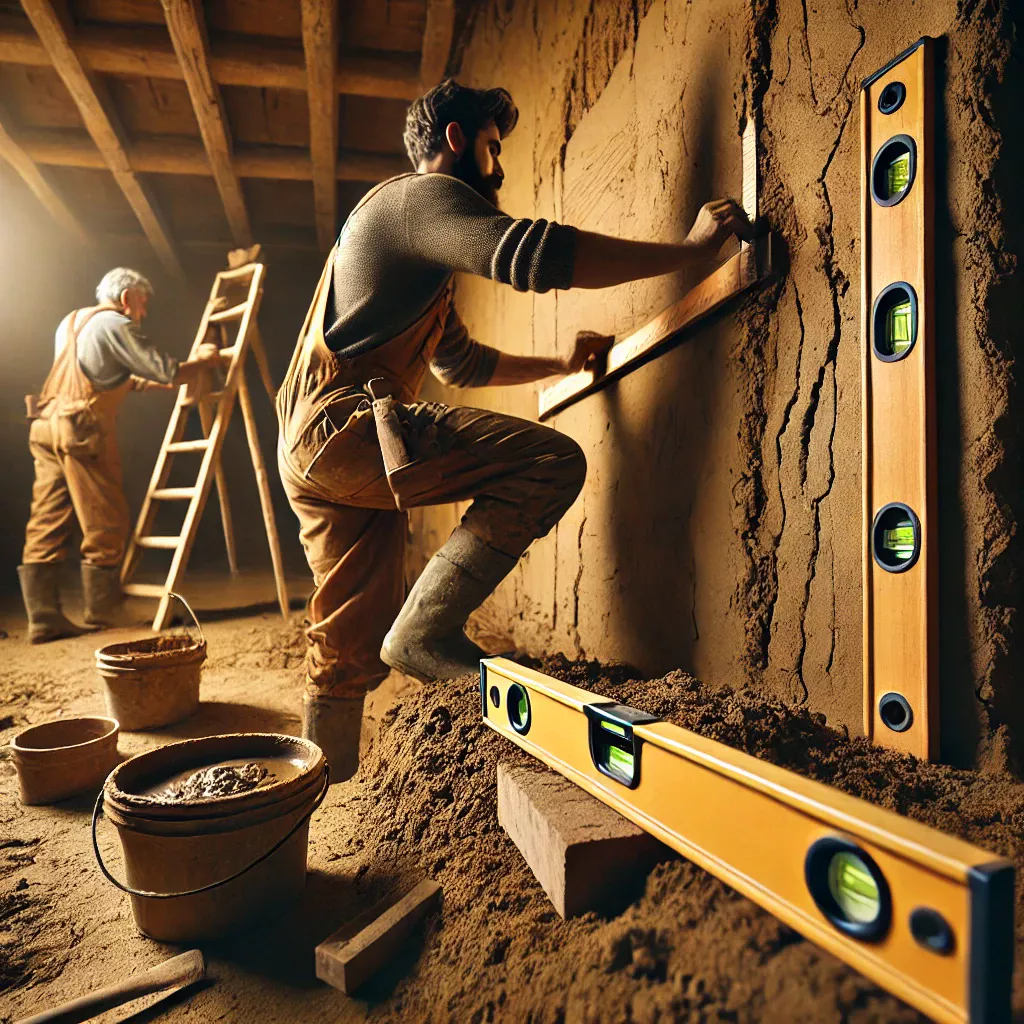
There are several main methods for leveling clay walls, each with its own features and suitable for different circumstances. Before choosing the best method for your project, it is important to consider the condition of the walls and their specifics. Let’s look at the most popular methods. 🏗️
1. Leveling with plaster 🛠️
This method is the most common and involves applying a special plaster mixture to the walls to level their surface. The plaster can be based on clay, cement, or gypsum. When performing the work, it is important to adhere to the application technology to avoid the appearance of cracks. The process includes:
- Pre-moistening the walls for better adhesion
- Applying a layer of plaster using a trowel
- Leveling the mixture horizontally and vertically
- Final sanding after drying
2. Leveling with drywall 📐
Drywall is an excellent solution for creating a flat surface on uneven walls. This method is also chosen if the walls have many cracks or other defects that are difficult to eliminate with available materials. For the work, it is necessary to:
- Secure a profile or battens to the wall
- Fix the drywall to the frame and ensure proper leveling
- If necessary, fill the joints with a special compound and sand
3. Leveling with panels 🖼️
This method is often used if you plan to update the appearance of the walls without major repairs. Special panels can be made from various materials, such as wood, MDF, or even drywall. Applying panels to the walls perfectly masks irregularities and adds aesthetic appeal. It is worth following these steps:
- Select panels according to the style of the room
- Pre-prepare the walls (cleaning and, if necessary, leveling)
- Fix the panels to the surface using glue or screws
4. Leveling with self-leveling compounds 🌊
This method is ideal for surfaces with minor irregularities. A special self-leveling compound helps create a perfectly smooth surface. For this, you need to:
- Prepare the mixture according to the instructions on the label
- Pour the mixture onto the floor and evenly distribute it using a trowel
- Let it dry, which usually takes from a few hours to a day, depending on the temperature and humidity in the room
Depending on your needs and conditions, you can choose one of these methods or even combine them for better results. The more informed you are about different technologies, the easier it will be for you to make the right choice for your project. 👷♂️
Choosing Technology Based on Wall Condition
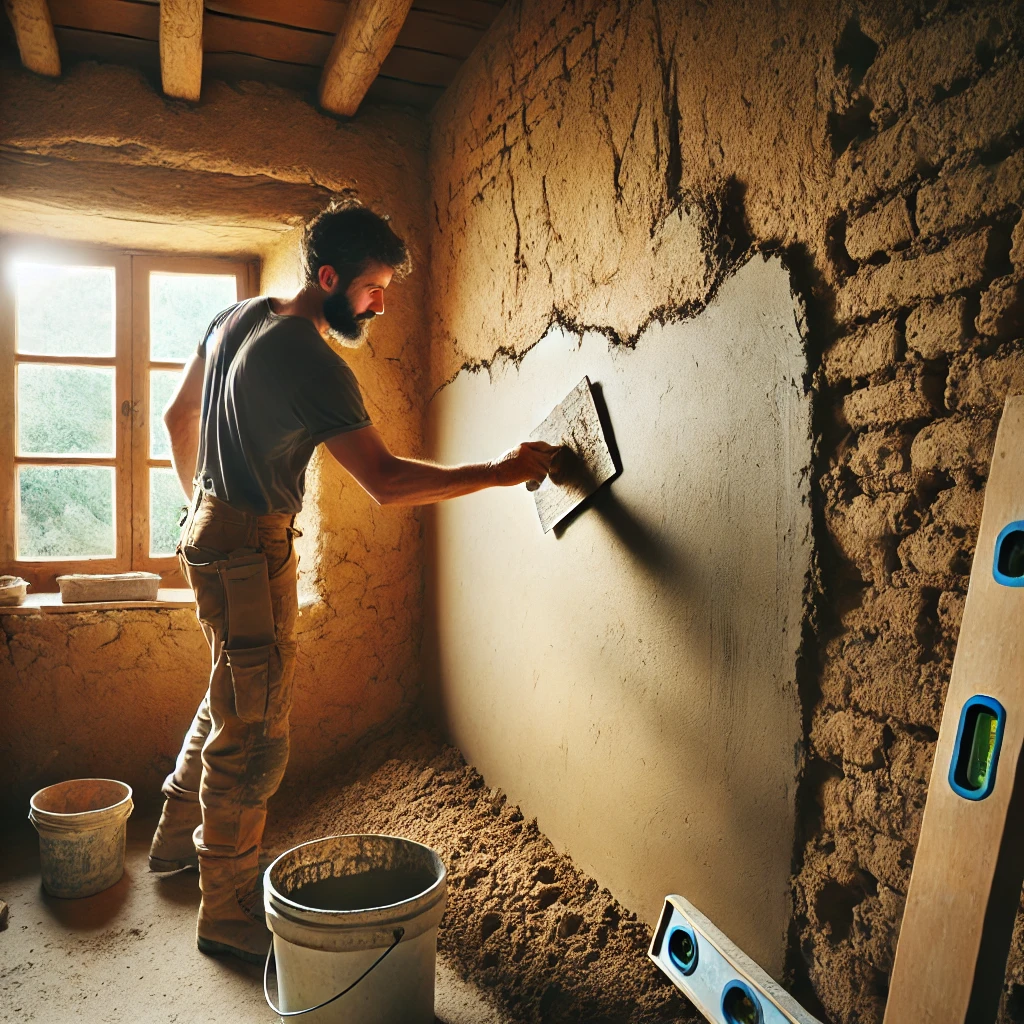
The choice of technology for leveling clay walls depends on the condition of your walls. The right choice can significantly affect the durability of the result and the aesthetic appearance of your space. It is necessary to consider a number of factors, including the type of irregularities, the humidity of the materials, and possible loads on the walls. So, let’s look at several leveling options depending on the condition of the walls. 🔍
1. Minor irregularities
If your walls have slight irregularities, the best choice will be to use plaster. This allows for quick and effective elimination of defects, creating a smooth surface. Special plaster mixtures that can self-level save time and effort. However, before applying the plaster, it is important to clean the surface of contaminants to ensure better adhesion. 🛠️
2. Moderate irregularities
For walls with moderate irregularities, the leveling method using drywall is suitable. With a frame made of metal or wood, you can create a flat surface of various formats and dimensions. Drywall also has excellent sound-absorbing properties, which will help increase comfort in your home. Remember that it is important to prepare the wall for drywall installation, including filling large cracks and dents. 📏
3. Deep irregularities or serious defects
In cases with serious cracks and deep dents, you may need a combination of methods. First, fill the defects with special sealants or putties. After that, apply plaster for the main leveling. If you want to add a decorative element, combine these methods with the use of panels for cladding, which will cover any remaining defects. 🛡️
4. Wet or damp walls
If your walls have suffered from moisture or have mold stains, it is important to first eliminate the causes of moisture. Use waterproofing materials before starting leveling. Only after drying and eliminating the source of moisture can you proceed to the leveling procedure. Otherwise, a new layer of plaster or drywall may quickly be damaged due to the presence of moisture. 💧
5. Damaged walls
If you are dealing with walls that have been seriously damaged, for example, during natural disasters or due to material aging, it is best to choose a technology that includes dismantling old structures and installing new elements. This may involve re-planning the space, leveling the walls with new materials, and restoring the aesthetic part of the room. 🏗️
By understanding the condition of your walls and the available technologies, you will be able to better plan leveling work, achieving the desired result that will not only improve the appearance of your home but also extend the lifespan of clay structures. In the next stage, we will take a detailed look at methods of leveling clay walls to help you choose the optimal solution for your case. 🌟
Care Tips for Level Walls
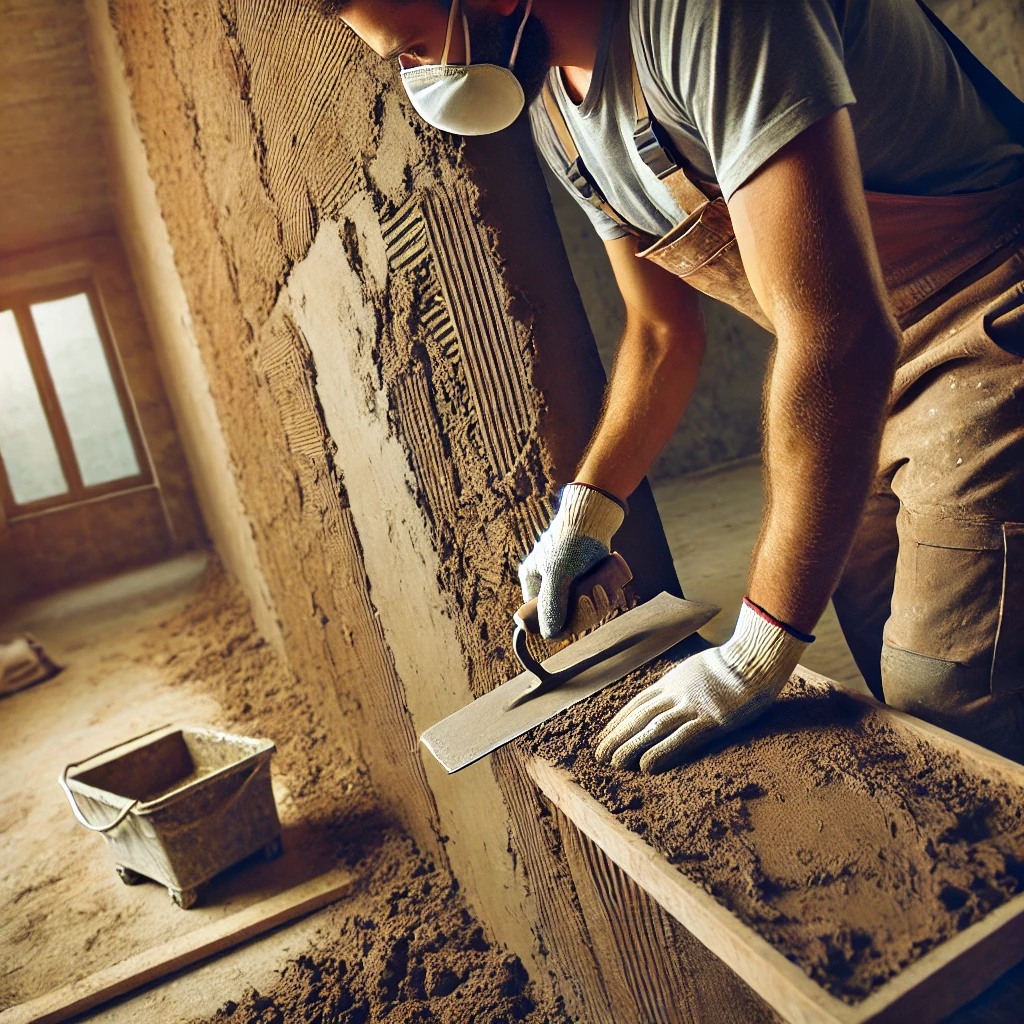
Caring for leveled clay walls is an important stage that determines their durability and preservation in their original form. Proper care not only enhances aesthetic properties but also prevents the emergence of new defects that can spoil the results of your efforts. 🌿
Before moving on to specific tips, it is worth noting that clay walls require special attention due to their sensitivity to temperature and humidity fluctuations. Here are some tips to help maintain the appearance and functionality of your walls:
- Regular monitoring: After leveling, conduct regular inspections of the walls to detect any cracks or dents that may appear. It is recommended to check for deformations, especially in areas with the highest load. 📊
- Humidity control: Clay walls are sensitive to humidity. Use dehumidifiers to avoid excessive moisture, and also ventilate the room regularly. Maintaining an optimal humidity level is the key to the long service life of your walls. 💧
- Updating coatings: If the walls are covered with paint or other finishing materials, you should monitor their condition. Update the coating in a timely manner when the first signs of wear appear, removing the old coating and applying a new one. This will add freshness to the room and protect the walls from adverse factors. 🎨
- Avoiding improper use of chemical cleaners: Avoid using aggressive chemical cleaning agents that can damage the surface. Instead, choose natural cleaning agents, such as a solution of water with vinegar or essential oils. 🌱
- Regular cleaning: Keep an eye on the cleanliness of the walls, periodically cleaning them of dust and dirt. You can use a damp cloth or a soft brush for this. Remember that the cleaner your walls are, the longer they will maintain their appearance. 🧽
Additional tips:
Remember that prevention is always easier and cheaper than dealing with the consequences! ⏳
It is also worth considering that any type of repair or ongoing work should not compromise the integrity of the new surfaces. For example, when placing furniture in the room, be careful not to damage the walls. If you plan to move furniture or equipment, use protective covers or pads to avoid scratches and other damage.
Thus, by choosing the right care methods, you will ensure that your clay walls not only have an aesthetic appearance but also functionality for many years. 🌈 Engage in regular maintenance processes and enjoy your comfortable living in the eco-friendly space you created with your own hands!
Common Mistakes in Leveling
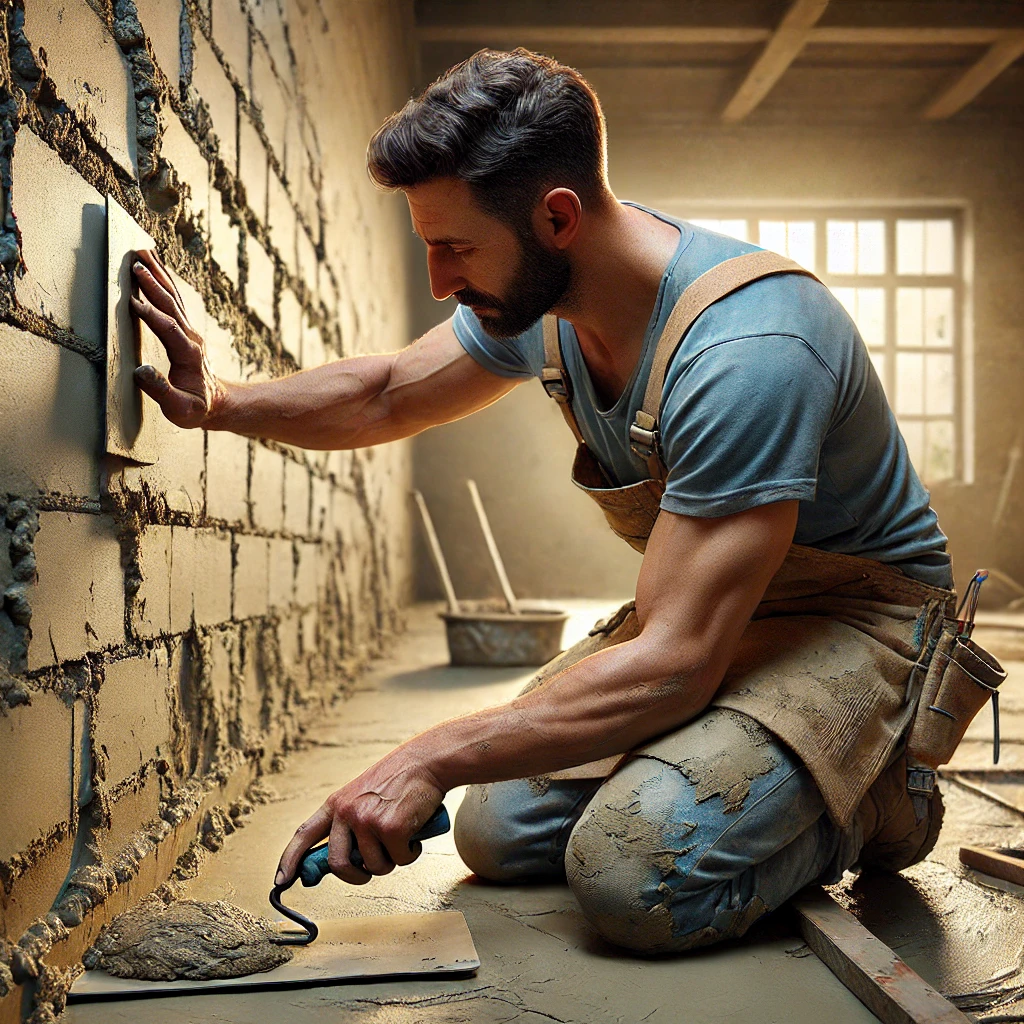
Leveling clay walls, despite all the aesthetics and practicality, is not without certain risks. When it comes to performing this work, there are many common mistakes that can spoil all your efforts. Let’s look at some of them so you can avoid similar situations during your work. 🚫
1. Incorrect choice of materials 🧱
One of the most common mistakes is using low-quality or inappropriate materials for leveling. For example, if the walls have high humidity, ordinary plasters may not meet the requirements, leading to their premature destruction. Choose materials that are suitable for the specific conditions of your space.
2. Ignoring preliminary preparation ⚠️
Quality wall preparation is a key stage, and ignoring it can lead to a significant decrease in leveling quality. Old paint, dirt, cracks—all of this needs to be thoroughly removed before applying any leveling material. Unfilled cracks will remain visible under the new layer, and old contaminants can hinder the adhesion of new materials.
3. Incorrect application 🏆
Applying leveling materials requires proper techniques. A layer that is too thin can lead to unevenness, while one that is too thick can lead to cracks. If you do not follow the manufacturer’s recommendations, the result may not meet expectations, and you will have to redo the work.
4. Skipping the drying stage 💧
Drying time is a critically important moment that cannot be ignored. If you decide to apply a new layer of coating to a surface that is not sufficiently dry, it can lead to peeling or staining. Do not rush to move on to the next stage, even if you think the walls are already dry.
5. Insufficient ventilation 🌬️
Improper ventilation while working with materials can not only affect the quality of leveling but also threaten the comfort of your work. Always ensure proper air circulation in the room—this will help avoid the accumulation of harmful vapors and improve the quality of the work being done.
6. Neglecting slope and level checks 📏
Ignoring the check for wall levelness is another typical mistake. Use a water level or laser measurer to ensure that your surface is indeed level. Incorrectly leveled walls can lead to a loss of aesthetics and functionality.
7. Skipping inspection after professional work 🔍
Even if you hired a specialist, do not forget to inspect the finished work. Even experienced craftsmen can have inaccuracies. Regular monitoring will ensure timely detection of problems, allowing you to keep your walls in optimal condition.
By remembering these common mistakes, you will be better prepared for leveling clay walls. Attention to detail, adherence to all stages, and the use of quality materials are your guarantees of a successful result! 🌟
Final Thoughts: Benefits of Leveling Clay Walls
Leveling clay walls has many advantages that justify the time and effort spent. First of all, it provides a significant improvement in the aesthetic appearance of the room, making it more comfortable and attractive. Properly leveled walls are much easier to paint, wallpaper, or clad with other materials that require a perfectly smooth surface. 🌈
Secondly, flat walls positively affect the functionality of the space. This is especially important in conditions of limited area, where every centimeter matters. If the walls have irregularities, furniture may stand on slanted surfaces, which can lead to damage. Leveling the walls allows you to avoid such problems and create a comfortable space for living or working.
Additionally, leveling clay walls helps ensure better thermal and sound insulation. Uneven walls can create gaps that lead to heat loss in cold weather or noise from the street. By leveling, you will achieve a significantly more enclosed space, which will reduce the penetration of external noise and save energy for heating. 💡
Do not forget that timely leveling of wall issues can save money on future repairs!
It is also worth noting that leveled walls have greater wear resistance. If you use quality materials for leveling, it contributes to the durability of the structures. No less important is the fact that such walls are easier to maintain. They are less prone to dust and dirt accumulation and are also easier to clean.
Thus, leveling clay walls not only enhances the aesthetic indicators of your home but also ensures comfort, functionality, and resource savings. With proper care and timely detection of problems, you can preserve all these benefits for many years. Remember: good walls are the foundation of your coziness and comfortable life! 🏡
